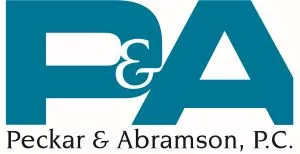- within Compliance topic(s)
In 2005, New York City enacted false claims legislation as part of the city's administrative code. The NYC law, modeled loosely after the Federal False Claims Act, was passed to protect New York City from "false or fraudulent claims." In addition, the law was intended to encourage whistle-blowers to come forward and notify the city when they believe that a city contractor (construction or otherwise) has "knowingly" filed a false or fraudulent claim in connection with contracts with the city or any of its agencies or departments. There have been only five proposed complaints received under the NYC act since 2005.
New York State's legislators, articulating concerns mainly about Medicaid fraud, recently enacted their own false claims act. The NYS act is substantially similar to the NYC law, but does contain several differences that could be significant where the law is enforced. This article will compare and contrast the two laws and also highlight several features that could potentially ensnare construction contractors. Like the NYC act, the New York State statutory scheme potentially exposes construction contractors to troublesome liability for good-faith claims that later turn out to contain mistakes or be merit less.
Liability and Penalties
The NYS act and the NYC act impose harsh penalties against those individuals or entities that knowingly submit a false claim.
Under the NYS Act, a violator that submits fraudulent claims to the state shall be liable "to the State for a civil penalty of not less than six thousand dollars and not more than twelve thousand dollars, plus three times the amount of damages which the state sustains." If a local government also sustains damages as a result of the false claim, the local government can recover its own award in the amount of three times the actual amount of damages sustained by the local government.
Similarly, under the NYC act a person who makes a false claim is liable for three times the amount of damages that the city sustains and a civil penalty of between $5,000 and $15,000 for each violation. Both Acts also assess costs, including attorney's fees, against the violator.
Definitions
Both acts contain nearly identical definitions of the following important terms: "claim," "knowing" and "false claim." Indeed, it is the overbroad definitions of these terms that are the cause for much of the concern about the open-endedness of the liability under the statutes. For example, the NYS act defines a "false claim" as "any claim which is, either in whole or part, false or fraudulent" whereas the NYC act defines a "false claim" as "any claim, or information relating to a claim, which is false or fraudulent." The NYS act defines "claim" in the following manner:
[A]ny request or demand, whether under a contract or otherwise, for money or property which is made to any employee, officer or agent of the state or a local government, or to any contractor, grantee or other recipient, if the state or a local government provides any portion of the money or property which is requested or demanded or will reimburse such contractor, grantee or other recipient for any portion of the money or property which is requested or demanded.
Under the NYC act, "claim" also encompasses any record or statement used in presenting an obligation to pay or transmit money or property either directly or indirectly to the city. A similar provision is contained in the NYS act.
The experience of contractors under the federal law and in some other states leads to the concern that it may be argued that any payment application, change order request and any subcontractor pass-through change order requests, in addition to traditional "claims" for extra compensation, may fall within the scope of these laws, if the claim is false or fraudulent. Additionally, any backup documentation, take-offs or estimates submitted as supporting documentation, could be considered false or fraudulent as well. While what constitutes a fraudulent act is well defined under the law generally, a false claim is not so well defined. The laws themselves lend little guidance, as they only define a false claim as "any claim, or information relating to a claim, which is false or fraudulent." Thus, any portion of a change order request or payment application that the state (or city) may properly reject could also be deemed "false" within the meaning of the law.
The two New York laws define "knowingly" in an equally similar manner (using the federal act as its source), and thus create statutory regimes under which a violation may be proved if the plaintiff demonstrates that the defendant submitted claims for payment or approval and it: (1) had actual knowledge that the claim was false; or (2) deliberately ignored the truth or falsity of the claim; or (3) recklessly disregarded the truth or falsity of the claim. Notably, neither the NYC act nor NYS act requires that fraudulent intent be proved.
Excluded Claims
The language of both acts is very similar in this area. The most striking difference between the two acts is that the NYC act specifically excludes claims with a cumulative value of less than $25,000. The state act contains no such minimum threshold amount.
The remaining exclusions under both Acts generally serve the underlying policy desire that the Federal False Claims Act serves to uncover unknown fraudulent practices on the part of the parties engaged in business with government entities; generally, if information regarding alleged fraudulent practices has already become public, than a cause of action by a private third party (a whistle-blower) will be disallowed.
Procedures Of The Two Acts Compared
The NYS and NYC acts both provide for two types of actions: (1) civil enforcement actions initiated by government counsel; and (2) the qui tam causes of action. Under both acts, a civil enforcement cause of action can be initiated by government counsel (either the state attorney general or a local government's counsel under the NYS act or the corporation counsel for the city of New York under the NYC act).
If the state or city commences a civil enforcement action, its counsel will have sole authority over the prosecution. Furthermore, both statutes allow for qui tam causes of action — which essentially allow for private parties, with knowledge of fraudulent claims being submitted to a government authority, to initiate a cause of action on the government's behalf against the offending parties.
Civil Enforcement Actions versus Qui Tam Actions
The two statutes diverge in the procedures and mechanisms involved when a qui tam cause of action is initiated by a whistle-blower. In particular, the NYS act allows a whistle-blower to actually file a complaint directly to the Supreme Court. The complaint is filed in camera (meaning it is not open to the public) and remains under seal for at least 60 days. It is not served on the defendant until the court so orders. During the 60 days that the complaint is under seal, the state attorney general has a number of procedural options at its disposal. The attorney general may:
- decide to intervene and then supersede the qui tam civil action by converting it into a civil enforcement cause of action (thereby substituting the state as the plaintiff in the place of the qui tam complainant); or
- intervene and merely assist and/or monitor the qui tam plaintiff in the action; or
- if the action involves a local government, allow the local government to assist the qui tam plaintiff or to decide, on its own, whether to intervene and convert the action to its own civil enforcement action; or
- decline to participate in the action or to authorize participation by a local government, thus allowing the private party-plaintiff to continue the qui tam proceeding (subject to judicial review provided for under the act and the possible intervention by the attorney general at a later date if the attorney general has good cause).
By comparison, the NYC Act provides that the city's corporation counsel is to act as a gatekeeper in reviewing the whistle-blower's allegations. A party must submit a "proposed civil complaint" that is signed and verified, and must include all material evidence and information necessary to support the allegations being made. The corporation counsel and the NYC Commissioner of Investigation must notify the claimant within 180 days of the receipt of the complaint regarding the action that will be taken. The corporation counsel can take the following actions:
- commence a civil enforcement proceeding based on the complaint — in which case the corporation counsel must commence a proceeding within 90 days of such notice or may delay for an additional 90 days if warranted; or
- designate the person who submitted the complaint or his or her attorney as a "special assistant corporation counsel" to file a civil enforcement action; or
- decline to commence a proceeding — in which case, no proceeding may be brought.
Under the NYS act, the qui tam plaintiff is entitled to receive a percentage of the proceeds recovered in the action, generally 15 to 30 percent depending on certain procedural factors.
Protection Of Whistle-blowers/Preventing Retaliatory Actions By Employers
Both acts provide protections to whistleblower employees for retaliatory actions by employers by permitting them to seek injunctive relief; reinstatement with two times back pay plus interest; reinstatement of full fringe benefits and seniority rights; and special damages including attorneys' fees and costs, should he or she be the subject of retaliatory action.
Frivolous Litigation Deterrent
In an attempt to discourage frivolous litigation, the NYC act holds that if the defendant prevails in an action commenced by a private individual, he or she would be able to apply for attorneys' fees and costs. However, the "frivolous" standard may be a difficult hurdle to leap for wrongfully accused contractors. There is no such provision in the NYS act.
Time Limit
Actions under both acts must be commenced no later than the latter of six years after the date on which the alleged violation occurred or three years after the date when the material facts underlying the false claim are known or should reasonably have been known by government counsel, but no more than 10 years after the date on which the alleged false claims were made.
The content of this article is intended to provide a general guide to the subject matter. Specialist advice should be sought about your specific circumstances.


